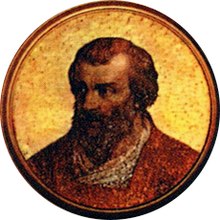‘The fruits of victory did ripen, grow soft, finally turning rotten’.
‘The King of England, John, may be my uncle!
But to me he is nothing more than an obnoxious carbuncle!
My thanks to you, King Philip for granting me this, my promised inheritance of land!
I acknowledge you as my rightful liege, King Philip Augustus, so high and most grand!’
So say, Arthur, Duke of Brittany (1187-1202/3)

In July of 1202 the grateful teenager, Duke Arthur of Brittany, paid homage to King Philip Augustus for Anjou, Aquitaine and Poitou. Philip would retain Normandy as his own vassal state.

‘Good career move kid!
Mutual felicitations are now warmly bid!
Of your evil uncle King John, we will both soon be rid!’
It was a truly joyous meeting between the old fox, King Philip Augustus and the young pup, Arthur of Brittany.
This cosy arrangement engendered a swift response from a most affronted uncle John, who promptly arrived in Normandy with an army. Would he ever be free of King Philip ‘de-esgusting‘ Augustus? Goodness knows he feared that he would never be!
De-esgusting Augustus with his machinations has always made us Plantagenet’s cross!
He has proved himself to the clan, a veritable and terrible Albatross!
Every time that there was a Plantagenet family dispute, ‘De-esgusting’ Augustus could always be relied upon to stick his nose into it. John had an ally in his mother Eleanor of Aquitaine, who vigorously supported her youngest and only surviving son in the defence of his empire. The formidable eighty year old was soon under siege at Mirebeau by her teenage grandson, Duke Arthur who was enthusiastically aided by the Lusignans. This was the summer of 1202.
‘Tis my solemn duty to rescue my beloved, bestially besieged mother!
I, King John! Yes, I, John am her only son, God knows, there is no other!
She has been insidiously surrounded by forces commanded by the son of my late brother!
To state that John rode to the rescue of his mother at Mirebeau with all speed was something of an understatement. On this occasion, John showed uncharacteristic military flair. The time was late July and by August 1st, he had defeated the rebel forces besieging his mother. John had not only rescued Queen Eleanor, but had also captured Arthur of Brittany. King Philip ‘de-esgusting’ Augustus was therefore forced to retreat from Normandy, his grand plan having failed. By the close of 1202, John had regained total control of Poitou. King John now seemed master of all that he surveyed.
King John in a stately pose.

But what of young Arthur?
Art, with the help of the king of France, you made a promising start!
But, Art, in any future events you will not take any part!
Once taken into his uncle’s custody and held at Rouen, the young Duke was seen no more. It is rumoured that John personally killed the boy in a drunken frenzy and tossed his body into the river Seine. True or otherwise, Arthur’s disappearance earned him the undying enmity of the Breton people.
The fruits of victory will always at first taste sweet!
But if not wisely nurtured, will soon become as foul as rotten meat!
John now began to antagonize his own supporters. Perhaps his euphoria at having so easily defeated his upstart nephew, as well as thwarting the designs of the ever present Philip ‘de-esgusting ‘ Augustus, had affected his judgement.
Mercenaries were regarded as a distasteful but absolutely essential component of any medieval leader’s military machine. They were to be hired as required, tolerated and dismissed when necessity no longer demanded their presence and maintenance. However, John now appeared to favour the faithless mercenary commanders over his loyal, long established Norman barons. Indeed, the king placed a number of these soldiers of fortune in positions of authority to which they were singularly unsuited.
You have raised these brigands above men that are known to be stout and true!
This is folly and constitutes an act that you will eventually and sorely rue!
Continue in this vein and your followers will not be many, but really quite few!
He gave free rein to one particularly rapacious mercenary chief, Lupescar, to pillage areas of Normandy at will. This irresponsible action was not calculated to bolster local support and would later cost John dear. King John would repeat these very same errors in England with greatly unfortunate and unforeseen results.





































